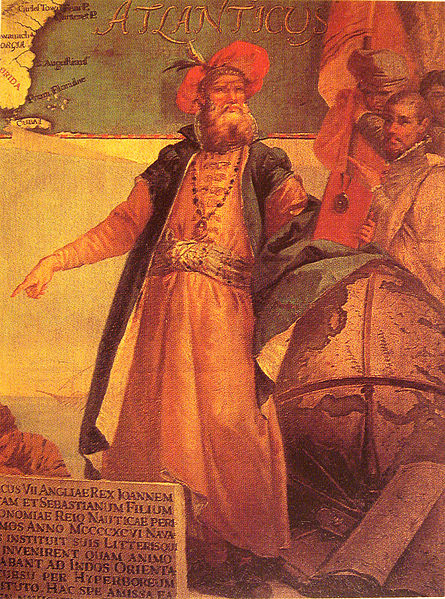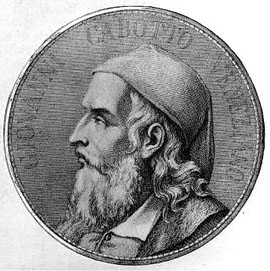 John Cabot is one of the greatest Italian explorers. His 1497 North American discovery was the first since the explorations of the Northern Vikings of the 11th century.
John Cabot is one of the greatest Italian explorers. His 1497 North American discovery was the first since the explorations of the Northern Vikings of the 11th century.
Italian or French or English?
Cabot’s biological name and birthplace has been the subject of debates throughout history. In Italy, he was famously known as Giovanni Caboto. However, evidence from the early 15th century point to Cabot’s background as being non-Italian. In France, he was known as Jean Cabot, while in Spain, he is named Juan Caboto. Also according to the 1484 Venetian Testamentary documentation, Cabot registered himself under the name “Zuan Chaboto” in Venice. In England, he used the name “John Cabot” which was supported by the Venetian residents in London. In October 2010, an anonymous Italian banker from London discovered a document pertaining to Cabot’s original name, which was reportedly identified as “Giovanni Chabotte.”
Naturalized Citizenship
Based on ancient Venetian records, Cabot became an active member of a religious confraternity administered by the St. John the Evangelist Brotherhood in 1470. Seven years later, Cabot acquired his first-ever Venetian citizenship which allowed him to play a crucial role in the Mediterranean maritime trading years. In 1483, Cabot documented the detailed events covered throughout the trade, one of which included the selling of “Crete” slaves in the Sultan Territories of Egypt. In 1497, he visited the Milanese ambassador to London who was then based in the Mecca region in the Arab states. Due to his key roles in pioneering the Venetian years of exploration, he was given the name “Zuan Cabotto.”
Spain
In 1484, Cabot married a Venetian named Mattea. The couple eventually had three sons – Sebastian, Ludovico and Sancto. According to Venetian sources, Cabot settled in Spain to pursue his civil engineering profession months after he built a house for his family. After dealing with financial issues during the late 1480s, Cabot migrated from Venice to work as a full-time insolvent debtor in Valencia in November 1488. During his stay in Valencia, some creditors attempted to arrest him in accordance with the “Lettre De Raccomandiazone a Giustizia” (A Letter of Recommendation to Justice). However, the attempt failed to push through after Cabot’s proposals under his “John Cabot Montecalunya” document were rejected by authorities in Valencia. In 1494, Cabot moved to Seville where he worked on the proposal of the Guadalquivir River Bridge construction. The Seville city council initially rejected Cabot’s proposal in December 1494. Cabot continued migrating from one place to another until he finally reached the English territory in 1495.
Explorers Abound
 Cabot’s temporary stay in England coincided with the commission of some European explorers, including Christopher Columbus. Cabot served as a consultant during the great Henry the Navigator’s quest for exploring the African and Siberian route. Cabot simply used northern longitude and longitudinal navigation to minimize the duration of Henry’s voyage. According to English historians, Cabot secretly went to Bristol in search of potential backers for his navigation activities. In 1496, Cabot’s royal patent stated that he travelled to Bristol since the latter was reported to be the assembly place for Atlantic expeditions. Dr. Alwyn Ruddock, a prominent English expedition researcher, discovered several documents stating Cabot’s supposed hiring of Italian backers in Bristol. Augustinian priest Fr. Giovanni de Carbonariis, who served as a deputy tax collector for the papal office, accompanied Cabot during his 1498 expedition. The great King Henry VII recognized Cabot’s exemplary efforts in navigating the Atlantic expedition.
Cabot’s temporary stay in England coincided with the commission of some European explorers, including Christopher Columbus. Cabot served as a consultant during the great Henry the Navigator’s quest for exploring the African and Siberian route. Cabot simply used northern longitude and longitudinal navigation to minimize the duration of Henry’s voyage. According to English historians, Cabot secretly went to Bristol in search of potential backers for his navigation activities. In 1496, Cabot’s royal patent stated that he travelled to Bristol since the latter was reported to be the assembly place for Atlantic expeditions. Dr. Alwyn Ruddock, a prominent English expedition researcher, discovered several documents stating Cabot’s supposed hiring of Italian backers in Bristol. Augustinian priest Fr. Giovanni de Carbonariis, who served as a deputy tax collector for the papal office, accompanied Cabot during his 1498 expedition. The great King Henry VII recognized Cabot’s exemplary efforts in navigating the Atlantic expedition.
Cabot’s first voyage began in 1497. Bristol-based merchant John Day, who happened to be one of Cabot’s backers, wrote a letter to Columbus. The letter stated the significance of the 1497 voyage, which eventually provoked Columbus’ decision to take a crucial role in it. In March 1496, Cabot finally received his patent from Columbus. The second part of voyage meanwhile started during the annual feast of St. John the Baptist in June 1497. During Cabot’s second voyage, he found a ship from a certain American island. The ship, which was initially found by the Bristow merchants, was recovered by Cabot’s navigation team in August 1497.
In the middle of 1497, the Newfoundland Post Office in America commemorated the 400th day of Cabot’s North American voyage. The office issued a commemorative stamp in honor of Cabot. According to the Bristol Chronicler publication, the first voyage letter submitted to Columbus was actually issued by an anonymous Venetian merchant in Bristol. Cabot became aware of the publicized issue, yet he neither confirmed nor denied it. The dispatch for the second letter was reportedly issued by the Duke of Milan who admittedly mentioned the short details of Cabot’s succeeding voyages.
Northwest Passage
After Cabot’s two voyages, he immediately approached Henry VII. In August 10, 1497, the king rewarded Cabot 10 pounds – which were then the equivalent of his salary during the first two years of working as a craftsman in London. In August 23 of the same year, Venetian explorer Soncino praised Cabot for being a great admiral in the Atlantic and North American voyage. Perkin Warbeck, who secured Henry VII’s throne during the 1497 Second Cornish Uprising, awarded him 20 pounds worth of pension grants in December 1497. In February 1498, Warbeck gave Cabot his full royal patent acquisition for his succeeding expeditions. The Great Chronicle, a London newspaper, reported that Cabot departed along with five ships from Bristol during the first week of May 1498. The departure was approved by Henry VII. According to the Spanish envoy based in London, one of the ships was devastated by a powerful storm. Cabot and his league of navigation backers unexpectedly landed in Ireland after the destruction. In 1499, Cabot fulfilled his final voyage – the North West Passage expedition.
Cabot’s exact cause of death remains a mystery in the chronicles of history. However, his legacy continues to be very well-respected all around the world. In 1972, the John Cabot University was established in Rome, Italy. A decade later, the exalted John Cabot bronze statue designed by Stephen Joyce was created. The latter is currently displayed at the Bristol Harbour area. The Cabot Circus shopping center opened at Bristol in 1998.